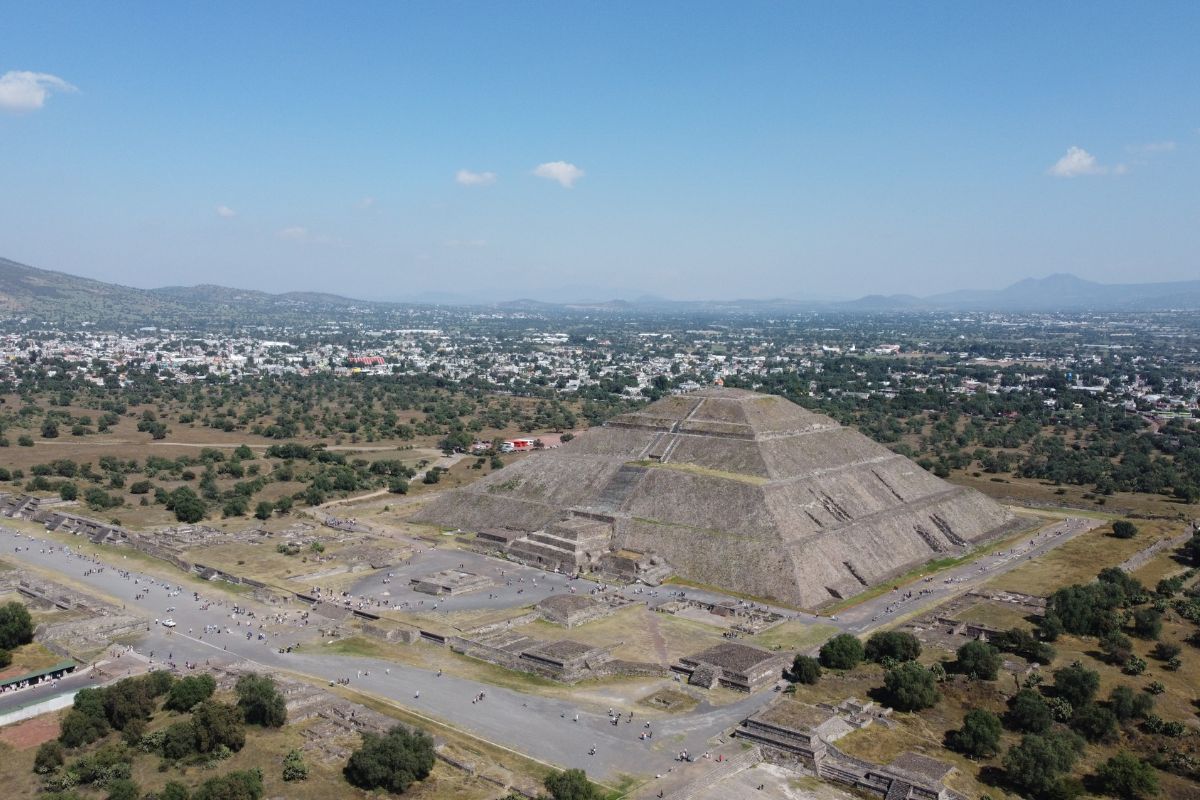Mexico has some awe-inspiring pyramids that are simply stunning! They’re a testament to the incredible architectural and engineering skills of the ancient civilizations that once made their home here. Pyramids have been a part of Mexican culture for centuries, dating back to the time of the Mesoamerican empires.
They were built as centers for essential ceremonies and resting places for those in power. The designs and engineering feats that went into these bad boys still amaze archeologists and tourists today. And honestly, who wouldn’t be in awe of these ancient wonders?
Whether the towering Pyramid of the Sun or the richly detailed Pyramid of the Feathered Serpent, these pyramids have always amazed people. Come with us to see Mexico’s most breathtaking pyramids and learn all about the rich history and culture that lies within these epic feats of human awesomeness.
Mexico’s Most Stunning Pyramids
We’ll take you on a journey to Mexico’s 12 most stunning pyramids, each with its charm and history. So buckle up and get ready to be amazed by the wonders of Mexico’s ancient past.
Pyramid Of The Sun, Teotihuacan
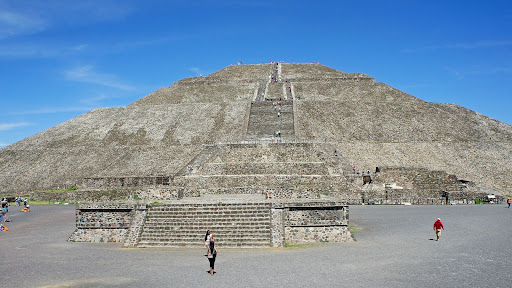
Source: Wikipedia
Get set for the adventure of a lifetime in the Pyramid of the Sun, folks! This incredible structure is located in the ancient city of Teotihuacan in Mexico, which is only about 30 miles northeast of Mexico City. And let me tell you, this structure is enormous. At 216 feet tall, it’s the largest pyramid in Teotihuacan.
The pyramid is built on a massive base that measures 760 feet on each side and has a series of steps leading to its top. Can you imagine being up there? The Pyramid of the Sun was built as early as 100 AD and played a significant role in Teotihuacan’s cultural and religious ceremonies. It’s believed that the pyramid symbolized the power and influence of the city in the region.
So if you’re up for an adventure that will take your breath away, the Pyramid of the Sun is the place for you. Get ready to experience the history and culture of this incredible structure and the people who built it.
Nohoch Mul Pyramid, Coba
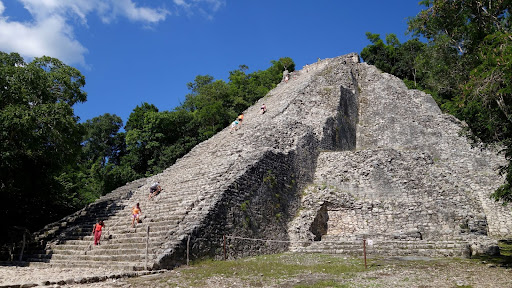
Source: Wikipedia
Are you looking for a pyramid that will take your breath away and test your climbing skills? Then the Nohoch Mul Pyramid on Mexico’s Yucatan Peninsula, just 90 miles east of Cancun, is for you.
This baby is an impressive 138 feet tall and one of the few pyramids in Mexico that visitors can still climb. The stairs have 120 steps and are quite steep, but once you get to the top, the view of the jungle and ancient ruins will blow you away.
The pyramid was built during the late classic period of the Mayan civilization between 500 and 900 AD and served as a religious and ceremonial center for the Maya. Its location at the crossroads of several trade routes also made it an important site for commerce and trade.
If you want to visit the pyramid, wear comfortable shoes and bring plenty of water, as climbing to the top can be challenging. You can also hire a guide to learn more about the history and significance of the pyramid and surrounding ruins. And don’t miss the bike ride through the jungle to explore the other ruins in the area.
The Great Pyramid, Calakmul
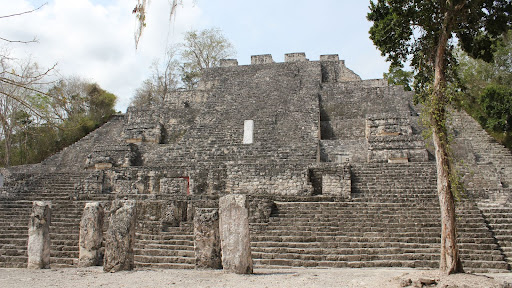
Source: Wikipedia
The Calakmul Pyramid is an impressive structure that stands 148 feet tall in the Calakmul Biosphere Reserve on the Yucatan Peninsula. The pyramid’s unique design, with its four sides sloping inward, offers a breathtaking sight.
Climb the top for a stunning view of the surrounding jungle and ancient ruins. Built around 700 AD, the pyramid served as a religious and political center for the Mayan civilization, and its location deep in the jungle suggests that it was an important fortress.
Calakmul was a powerful city-state in its time, and the hieroglyphic texts at the site provide insight into Mayan history and culture. The pyramid is a must-see destination, and hiring a guide or taking a tour is recommended, as it’s in a remote area, and the climb can be steep and challenging.
Rest if needed, and take your camera to capture the spectacular view from the top.
Pyramid of The Moon, Teotihuacan
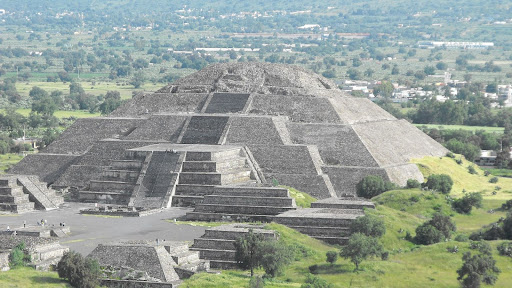
Source: Wikipedia
Get ready for a trip back in time and explore the Pyramid of the Moon, one of the most impressive pyramids in Teotihuacan, Mexico. Nestled just 30 miles northeast of Mexico City, this massive structure stands 140 feet tall and is the second largest pyramid in Teotihuacan, just behind the Pyramid of the Sun.
With its four platforms representing different construction phases, this pyramid is a true marvel. Built around 200 AD, the Pyramid of the Moon was a religious and ceremonial center for the people of Teotihuacan. There are theories that sacrifices were also made on the top platform of the pyramid.
Chichen Itza, Yucatan Peninsula
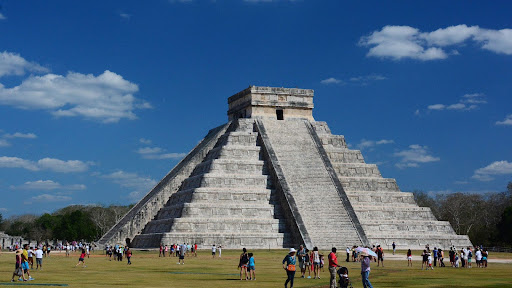
Source: Wikipedia
Embark on a fascinating adventure in the heart of the Yucatan Peninsula and marvel at the impressive pyramid of Chichen Itza. This architectural marvel rises 98 feet in the air and has nine terraced platforms decorated with intricate carvings that will take your breath away.
The pyramid’s unique design is incredibly fascinating during the spring equinox when the shadows cast by the stairs make it appear like a snake slithering down the structure. It’s a truly remarkable sight.
Built by the Mayan civilization between the 9th and 12th centuries AD, the pyramid of Chichen Itza served as a religious and ceremonial center dedicated to Kukulcan, the feathered serpent god. It’s believed that various rituals took place there, including human sacrifice, making the pyramid an essential site in the history and culture of the region.
Pyramid of the Magician, Uxmal
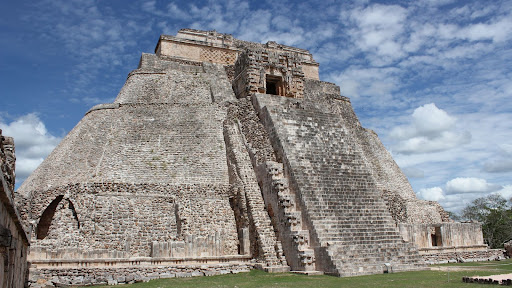
Source: Wikipedia
Discover an incredible and unique pyramid in the heart of the Yucatan Peninsula in the Mexican state of Yucatan that will amaze you. Just 50 miles south of Merida is the Pyramid of the Magician, a must-see Mayan pyramid unlike any other.
The pyramid is an architectural marvel with a distinctive oval shape and rounded corners, standing at 115 feet tall. It was built around 600 AD by the Mayan civilization and was dedicated to the god Itzamna, which served as a sacred place and pilgrimage site for the Maya.
The remarkable design and shape of the pyramid reflect the Mayans’ advanced knowledge of mathematics and astronomy. The pyramid is incredibly aligned with the planet Venus, and its steps are carefully aligned with the sun’s rays, highlighting its unique and unparalleled features. This distinctive and remarkable pyramid stands out from other pyramids, offering tangible evidence of its past existence and providing valuable insight into its rich history.
Temple of Inscriptions, Palenque
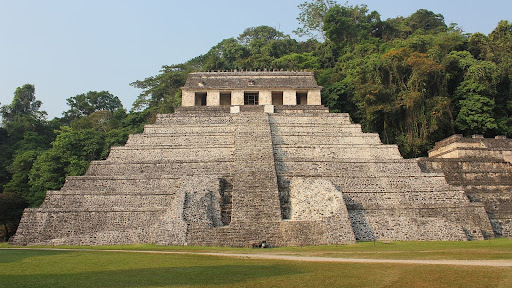
Source: Wikipedia
Explore the depths of the southern jungle of Chiapas in Mexico and discover the magnificent pyramid of the Temple of the Inscriptions. This terraced pyramid towers over the surrounding landscape, is 68 feet high and is decorated with intricate carvings and hieroglyphics depicting the history of the ancient Mayan civilization.
Climbing the steep steps to the temple at the summit is an unforgettable experience and offers breathtaking panoramic views of the lush jungle surroundings. The Temple of the Inscriptions was built in 600 AD and was a sacred site of religious and ceremonial importance to the Maya. At the top of the temple, inscriptions chronicle the life and reign of the revered Mayan ruler Pakal the Great, who ruled for over six decades.
The alignment of the temple’s pyramid of inscriptions with the sun and the planet Venus attests to the Mayans’ advanced astronomical and mathematical knowledge. If you plan to visit, wear comfortable shoes and take water and insect repellent to brave the humid jungle climate.
Pyramid of the Niches, El Tajín
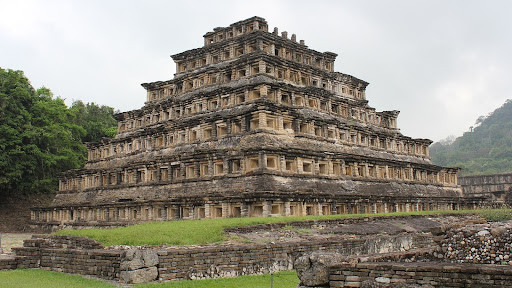
Source: Wikipedia
The Pyramid of Niches is an impressive Mesoamerican pyramid in Veracruz, Mexico. It’s about 60 feet high and has 365 niches, making it a unique and remarkable structure. Visitors can climb to the top to enjoy a breathtaking view of the surrounding area.
The ancient Totonac people built the pyramid between 600-900 AD and served as a center for religious and ceremonial events. It was dedicated to the god of thunder and rain and served as a place for offerings to the gods. The intricate carvings and unique design of the pyramid reflect the advanced knowledge and artistry of the Totonac people, making it a significant piece of history.
If you’re planning a visit, you should also check out the nearby Ball Court and Temple of the Seven Dolls. Both are equally impressive structures that provide a glimpse into the rich history and culture of the Totonac people.
The Great Pyramid of La Venta, La Venta

Source: Wikipedia
The Pyramid of La Venta, also known as the Great Pyramid, is a monumental structure located near Villahermosa in Tabasco, Mexico. This impressive pyramid is about 100 feet high and has steep sides of earth and clay.
The pyramid was built around 1000 BC by the Olmecs and served as the center of their ceremonial complex, playing an essential role in their religious rituals and ceremonies. The engineering and labor required to build it are a testament to the advanced knowledge and skills of the Olmecs.
To better understand the culture, you should visit the nearby Anthropological Museum, which houses many Olmec artifacts and provides insight into their way of life.
The Temple of the Cross, Palenque
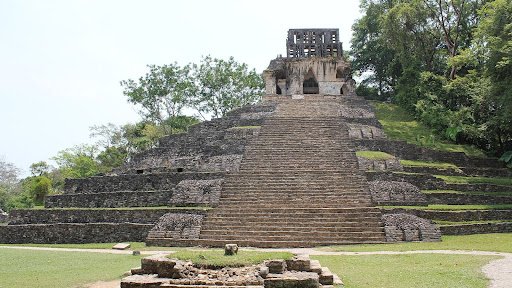
The Temple of the Cross Pyramid, a 60-foot-tall architectural marvel and a testament to the artistry and advanced knowledge of the Mayan civilization features intricate carvings and reliefs that will leave you in awe.
The Cross Pyramid is the largest structure and part of a larger complex of unique and essential buildings that serve as centers for religious and ceremonial events. Its name derives from the cross-shaped tree relief inside it, representing the World Tree, a key element of Mayan mythology.
The architectural style of the pyramid combines elements from the Classic and Late Mayan periods, making it a significant and unique testament to history. Climb to the top of the pyramid for breathtaking panoramic views of the surrounding jungle and archeological sites.
Monte Albán Pyramids, Oaxaca
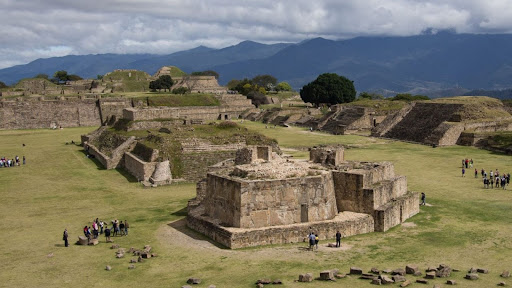
Discover the wonders of ancient Zapotec civilization at the Monte Albán Pyramids, located high on a mountain plateau overlooking the picturesque Oaxaca Valley. The Zapotecs built these impressive pyramids around 500 BC and served as a political and religious center for over a thousand years.
Visitors can marvel at the pyramids’ intricate architecture, which features a blend of Zapotec and Mixtec elements. The site also houses an extensive collection of carved stone monuments that provide a unique insight into the Zapotec culture and its complex hieroglyphic writing system.
From the top of the pyramids, you’ll have a breathtaking view of the valley and the vastness of the surrounding landscape. Don’t forget to visit the on-site museum, which contains a wealth of information about the history and culture of the Zapotec civilization. Whether you’re interested in history or want to explore the wonders of ancient Mesoamerica, the pyramids of Monte Albán aren’t to be missed.
Pyramid of Quetzalcoatl, Tula
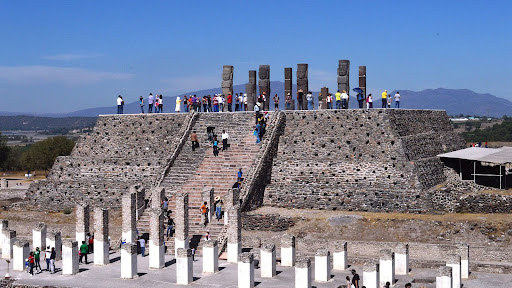
Source: Wikipedia
Experience the wonder of Mesoamerican history by visiting the Pyramid of Quetzalcoatl in Tula, Hidalgo, Mexico. Tula is a center of archeological sites, and the Pyramid of Quetzalcoatl is an essential destination for anyone interested in the region’s rich history.
The pyramid is an impressive sight. It’s made of stone and is decorated with intricate carvings of sacred animals, such as feathered serpents and jaguars. It’s also known as the Temple of the Morning Star and is flanked by four smaller pyramids that are equally impressive. These smaller pyramids enhance the grandeur of the complex.
The Pyramid of Quetzalcoatl was built by the Toltec civilization, one of the most influential Mesoamerican cultures of their time, and dates back to the 10th century AD. This structure served religious and ceremonial purposes. Many carvings of Quetzalcoatl, the feathered serpent god, adorn its walls. Quetzalcoatl was a central figure in Mesoamerican mythology and was revered by many different regional cultures.
Conclusion
Mexico is home to an impressive collection of ancient pyramids, each a testament to Mesoamerican civilizations’ remarkable skills and knowledge. From the iconic Pyramid of the Sun at Teotihuacan to the exquisite carvings of the Quetzalcoatl Pyramid at Tula, these pyramids offer an unforgettable glimpse into Mexico’s rich cultural past.
Whether you’re interested in history or just looking for a breathtaking adventure, visiting these pyramids is an experience not to be missed. Prepare to be impressed by the size and significance of these magnificent structures. So pack your bags, take your camera, and embark on an unforgettable journey to the most impressive pyramids in Mexico.

